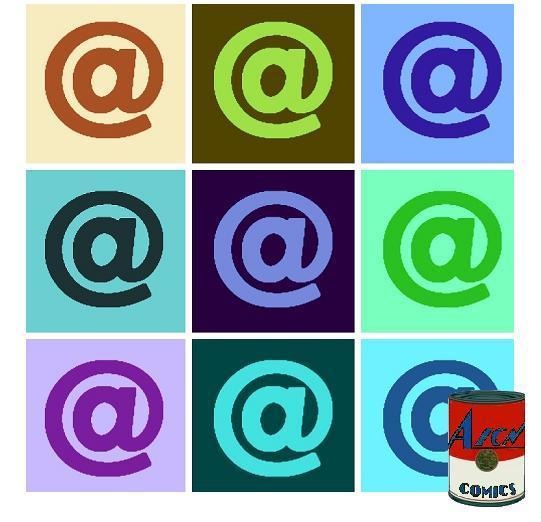
(Click title to go directly to the review)
THE DARK KNIGHT III: THE MASTER RACE #1
OUR EXPANDING UNIVERSE #1
HUCK #1
KRAMPUS: SHADOW OF ST. NICHOLAS OGN
ONYX #3
CLEAN ROOM #2
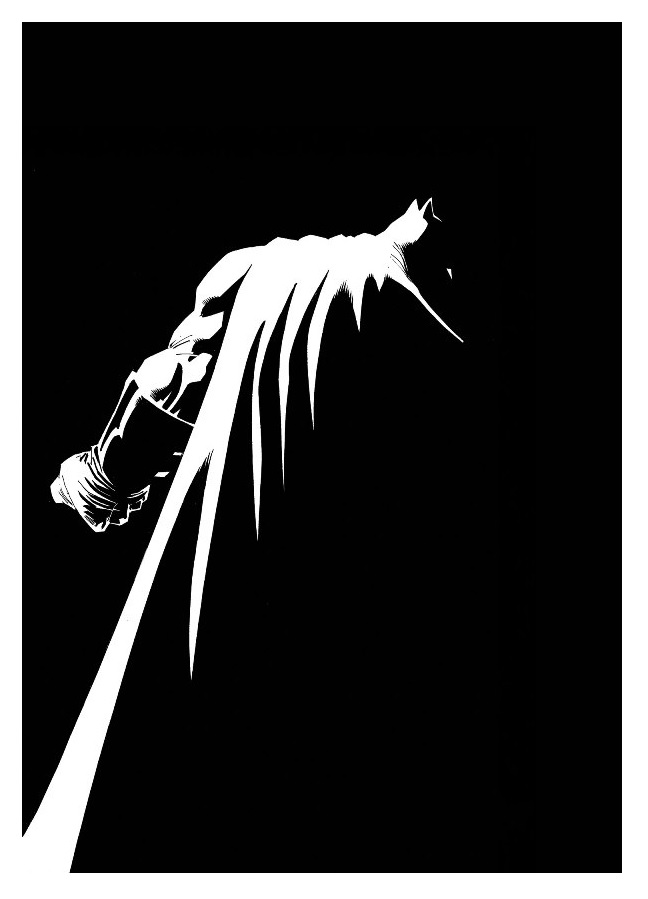
THE DARK KNIGHT III: THE MASTER RACE #1
Writers: Frank Miller & Brian AzzarelloArtists: Andy Kubert & Klaus Jansen
Publisher: DC Comics
Reviewer: Rob Patey (the reviewer formerly known as Optimous Douche)
My baptism into comics was dark--CRISIS ON INFINITE EARTHS and DARK KNIGHT RETURNS dark. Today we sit at the culmination of that age, we innocent cherubs of the Bronze Age into the dark now setting the tenor of this comic world. Brian Azzarello and Andy Kubert do a better Frank Miller than Frank Miller in the actuality of that future he imagined to usher in the dark age of the fallible hero. DARK KNIGHT II was a failed experiment because youthful fervor felt like mere curmudgeonly fist-shaking (and the fucking thing took forever to deliver). DARK KNIGHT III is the true successor to the seminal title of my youth, and righteous retribution for anyone who hated the Carrie Kelly double-blind pulled in the New 52 hunt for a Robin successor (suck my drama teacher).
To spoil is to write for Ain’t It Cool, so let’s just start with the million dollar question of who is under the cowl. It’s Carrie, and boy was the transition into womanhood wrought with testosterone. I was giddy at the end of this book when a now weary from life Yindel had her cop shop put the beatdown on Bats, and there was Carrie. Then I remembered she was once a girl in Robin shortpants, and felt really bad for the shoulder width she is now saddled with. Not sure why she became a woman with a man body, but if former Olympiads can get accolades for doing the opposite, then Carrie remains aces still for this faneezer.
DKIII isn’t totally her book, though. This tale is an equal indictment of the Big Blue Boy Scout. For every page of Carrie’s dark return to Gotham we received two pages of Wonder Woman with baby Jonathan Kent strapped in a papoose to her back and teenage Lara Kent rebelling on a super scale. With her father on ice, Kandor in crisis, and a world still on the brim of pissed off implosion, she will be the true star to watch in this Jedi of the trilogy.
Carrie. Lara, progeny. When I read these tales as a child, DARK KNIGHT III was the plan of succession I had imagined. I couldn’t care less that DKI postulated a tomorrow, DK II postulated an almost now and DKIII says we’re here, folks. It’s an odd barometer of time, but we are at a time in comics that’s a weird barometer for fans. With a malleable continuity comes a gelling of time that is seamlessly handled by Azzarello speaking in his own Miller-inspired tone. Michael & Kelly Ripa are as insipid and trite as any talking head Frank imagined 30 years ago to set the scene; we were merely obliging enough to say thanks for the blueprint of mediocrity. It is almost eerie to see how easily extrapolated worst scenarios for media became the norm.
There’s inspiration in this dystopia, though: Carrie’s relentless endeavor to carry on the work of the deceased Bruce Wayne; Lara, helping Kandor while ailing against her father’s frigid crucifixion retirement plan; even The Atom stepping out of his own microscopic pity parties (and prisons) of the past to help shepherd the new age of heroes. Positivity is too light, but inspirational is apt.
The world of DARK KNIGHT isn’t lighter, but in the sacrifice of the old, the fall of heroes if you will, I finally see that there is hope for a new set of heroes--heroes not cut from the same cloth as their successors, but rather fabricated in the here and now. Likewise for the artistic team, this is not the work of Frank Miller, but rather his children. This is not the end of the Dark Age; merely the capstone to show that sometimes heroes must fall for them to truly transcend to legends. Brue Wayne may be dead in this book, but his presence permeates every panel.
When Optimous isn't reviewing comics he is making the IT words chortle and groan with marketing for MaaS360, Enterprise Mobility Management. He also has a comic coming out sometime soon, for updates head to robpatey.com.
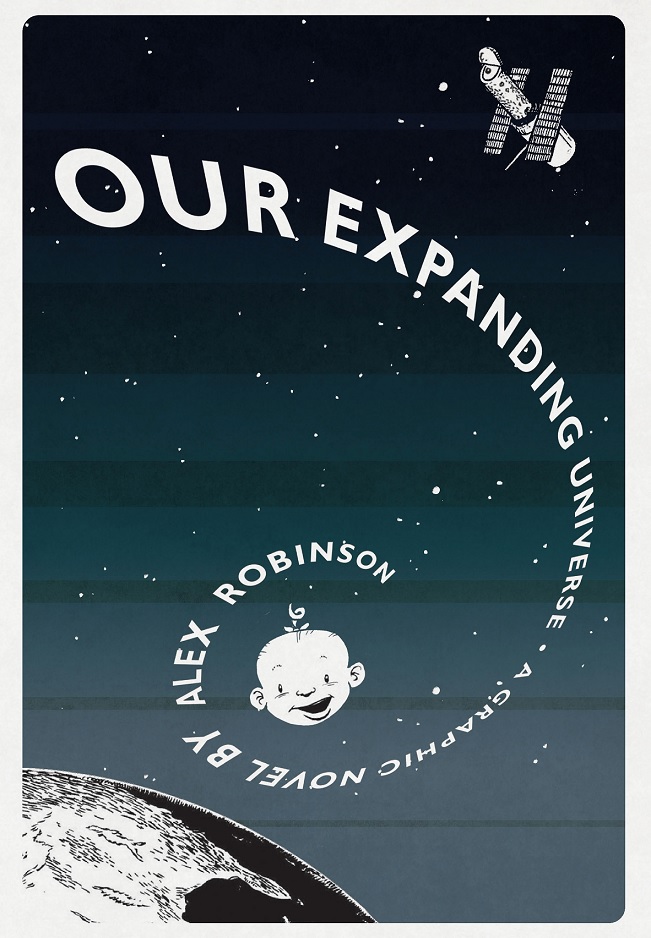
OUR EXPANDING UNIVERSE #1
Writer: Alex RobinsonArtist: Alex Robinson
Publisher: IDW Publishing/Top Shelf Productions
Reviewer: Humphrey Lee
I guess I need to start this review off with a bit of a spoiler and some bummer news to just rip the band aid off up front, so here it is guys: You’re all going to age and slowly degrade into a pitiful shell of your former selves and then no longer cease to exist. Bummer, right? That unfortunate natural progression is more or less the main thrust of Alex Robinson’s latest existential piece of work, OUR EXPANDING UNIVERSE. If anyone is familiar with the man’s work – and man, I would hope a good bit of you would be – human flaws and frailty are kind of the name of the game. Typically, though, when I would use that term, “frailty,” it would be in the context of mental frailty. People letting emotions cloud their judgment and making poor decisions is also a trademark of the Alex Robinson graphic novel, and OUR EXPANDING UNIVERSE is no exception to this trend. What “frailty” also encompasses this time around is that whole, y’know, slowly working our way into being some sort of dirt particulate caught up in fast traveling air currents thing.
Middle-aged is the war being waged here. Biological clocks are ticking, existential crises are falling like dominos, everything is absolute pandemonium. Or it’s just what happens as we continue to get older: You start to not only question your own place in the current time but also what legacy you will leave behind via your actions and/or offspring. And that’s where we start in OUR EXPANDING UNIVERSE: with three pretty long-term bros just trying to get in a game of “box ball” and even that little slice of daily get away being somewhat fucked up by adult life happening. The trio each represent some of the walks of life that you come to find in middle age: Scotty is the married man with one kid out and another on the way and is ruining the game being late and stuck with child while waiting for mom to come grab him, and then you have Billy and Brownie, the former also a married man in kind of roiling internal debate about having a kid of his own and the latter the swinging single of the group. And as with every Alex Robinson slice of life story, each represents a viewpoint that has its own vantage that hits home in some form and that brings about that “oh yeah, I know how THAT is” feeling and has a bit of nonchalant poignancy that rises and falls as you progress through its pages.
The man, myth, legend known as Alex Robinson really just has a gift for this kind of uber personalized story; it’s just that he, like you and I, is getting older and has decided to grow up his story themes and devices. You can tell the man has the touch with finding the emotional ins of life because even I, a thirty-something male who is not exactly represented by our three main foils here in OUR EXPANDING UNIVERSE, still found myself nodding my head in that “sing it, brother” manner. I may be in the age range that Robinson is focusing on here, but in my current lifestyle I’m living as kind of an amalgamation of these characters, with the career and wife that Billy has on his plate but none of that child-rearing cloud hanging over my head because my wife and I simply have no interest in producing a (probably mini-Hitler in the making) smaller version of ourselves, so I’ve got a bit of the free-wheeling aspect of Brownie’s life going for me. But the life parallels are still there, no matter your exact lifestyle, and come complete with those grin- or grimace-inducing moments of identification with what Robinson is putting on the page.
For example, I may not be interested in spawning a tiny me, but I still have those twinges of being responsible for taking care of other forms of life, and Brownie represents that with his singles lifestyle. He does not have the added drama of marital issues and a human child, but every day he seems to be wrestling with his own “the end is creeping near” watershed moments about finding a mate and spending the rest of his days with that person caring for them, and he unleashes his paternal instincts in the form of furry kids, also known as pets, and I get that notion. I may have the (hopefully) lifelong mate thing down, but you still wonder about that legacy. Brownie and myself don’t really have that procreating urge, but we both still want tiny beings around to take care of and make happy and derive enjoyment from their enthusiasm. I’m not a diaper-changing kid of guy because I’m significantly happy having my career and hobbies be the things I put my primary energies into like Brownie, but the parenting juice is still somewhat there with the fur babies my wife and I have. I see no end of my fellow nerd friends geeking out on social media over the abundance of geek media things we have coming forth soon – like a new motherfucking Star Wars movie! – and they’re doing so not only because of their own inner child getting some playtime, but also because of getting to share that with their own children, and that seems cool. I still have no interest in it myself, but I like having those occasional rearing moments that you hold with you, like how one of my two overweight cat children is currently using my foot as a pillow as I type this, or how our other black tomcat got himself covered in glitter last night and is a sparkle kitty now.
But you see all that up there? That’s the kind of introspection that Alex Robinson elicits in his work, and why they always end up being personable, engaging reads. I don’t completely identify with any of the main characters he establishes in OUR EXPANDING UNIVERSE at all – hell, I barely halfway represent any of them – but the actions they all take, the emotional hurdles they jump through for us as they live their paper lives and so on, all find an in with you in some way. I’m not a childbearing kind of guy, but literally 90% of my main cadre of longtime college friends either has a tiny human of their own or has one on the way, so I do see how the life changes come with that responsibility on the surface, at least. I don’t know what internal household dramas are happening with them or the level of tensions the kids may be having leads to with fighting, but I see the good (like that geek-sharing example above) and I see the bad of “yeah, we’re just not going to see Jim anymore because he had to take a job in Arizona” all the time. I may not “get it”, but I get it, and that identifying element has always been key to the Alex Robinson experience, and it is definitely at top form in this latest original graphic novel of his.
All that said, this is also a book that has a plot wrapped around all those appreciable moments, and in that regard OUR EXPANDING UNIVERSE is solid affair. It doesn’t quite have the flowing, more rom com ups and downs of his previous works, but obviously this is a more grown up narrative with more adult plot shifts and narratives to accommodate. Unfortunately, they tend to be a little on the predictable side when they arise (not terribly surprising spoiler: one of the married guys has some infidelities!), but they lubricate the gears well enough as Robinson does what he does and pulls the poignancy out of everyday moments and hits you right in the feels, as I believe the kids say these days, and he does it so well, and OUR EXPANDING UNIVERSE is no exception. It’s another great work by the man, and with a very apt title that conveys a simple truth: even though it feels every day that parts of our world are collapsing in on themselves, everything around us is growing exponentially, and our speckish struggles are what make us human.
Humphrey Lee has been an avid comic book reader going on fifteen years now and a contributor to Ain't It Cool comics for quite a few as well. In fact, reading comics is about all he does in his free time and where all the money from his day job wages goes to - funding his comic book habit so he can talk about them to you, our loyal readers (lucky you). He's a bit of a social networking whore, so you can find him all over the Interwebs on sites like Twitter, The MySpaces, Facebookand a blog where he also mostly talks about comics with his free time because he hasn't the slightest semblance of a life. Sad but true, and he gladly encourages you to add, read, and comment as you will.
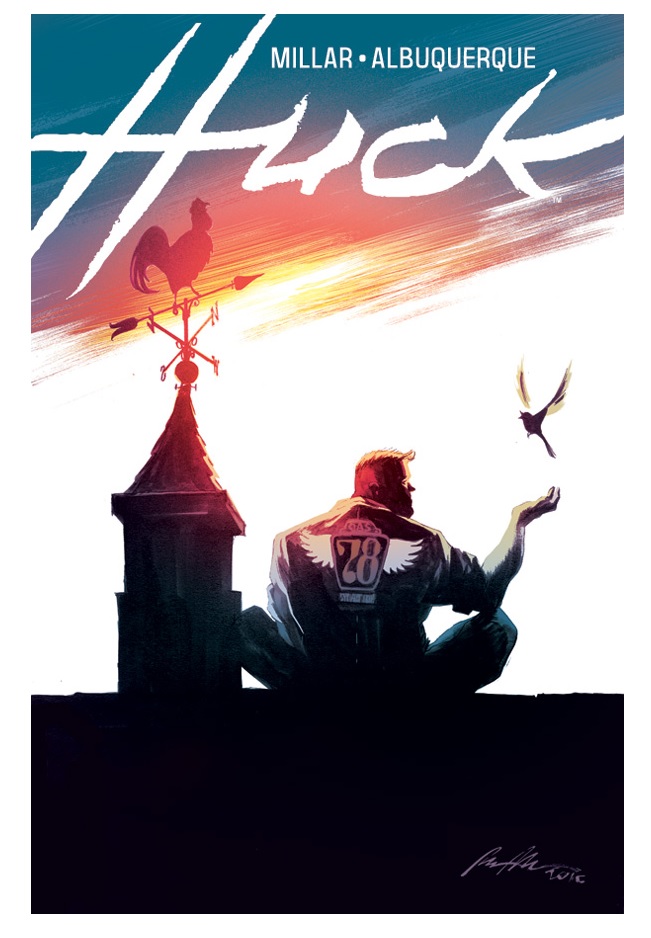
HUCK #1
Writer: Mark MillarArtist: Rafael Albuquerque
Publisher: Image Comics
Reviewer: Masked Man
The master of sensationalistic comic books is back, yet this time he's pulled an about-face. Instead of creating something designed to appeal to the 13 year old in all of us, he's trying to appeal to the rest of us. Or is this just another clever marketing ploy on his part, creating a sizzle that is stronger than the steak?
Well, I'm not sure you heard the story, which is a good one, but Mark Millar, the man behind KICK ASS and KINGSMAN, saw the movie MAN OF STEEL, and like many of us, his reaction was “wtf?!?” While being respectful to the filmmakers (everything fit the movie they were trying to make, so good on them), he felt “wait, this is Superman!” Saying that even Superman now kills, maybe we have actually lost something. That hatched the idea in his brain to create a kinder and gentler superhero--the kind we haven't seen in years, because the 13 years olds in us branded it lame. So Millar created Huck.
Getting into the spoilers, Huck is a kindhearted, seemingly slow-witted country lunk who is also a riff on the Man of Steel himself: fast, strong, and nigh-invulnerable (old school Clark). The orphan boy, now an adult, was always taught to do one good deed a day, so he does, big or small. His home town of Raine gets it, and they keep quiet about it all; no need to let the world at large know this marvel exists if he doesn't want them to--that is, until a new girl comes to town. After figuring out Huck rescued a bunch of school girls in Africa, she (seemingly) sold his secret to the media--end act one.
As typical with Millar's writing, everything plays out very cinema-like, although in HUCK's case, a Frank Capra movie as opposed to his usual Paul Verhoeven film. Huck himself is a likeable enough character, and the small town he lives in is affable as well. In a nutshell, it's a nice first issue.
AMERICAN VAMPIRE artist Rafael Albuquerque joins Millar on this mission of true justice and decency. Albuquerque's line work is all well done, but Dave McCaig’s colors seems to be the real art star here, giving the pages a painted quality on par with people like Dave Stewart and Dustin Nguyen. The book is as different and as inviting as Millar clearly wants it to be.
I gotta say, I'm intrigued by HUCK. It's a decent enough start to the story, and I'm always curious to see creators try something outside of their usual toolbox, regardless of if it is just another marketing ploy. I'm also curious if the 13 year old inside of all of us will tolerate such a 'lame' story from the master of in-your-face pop.

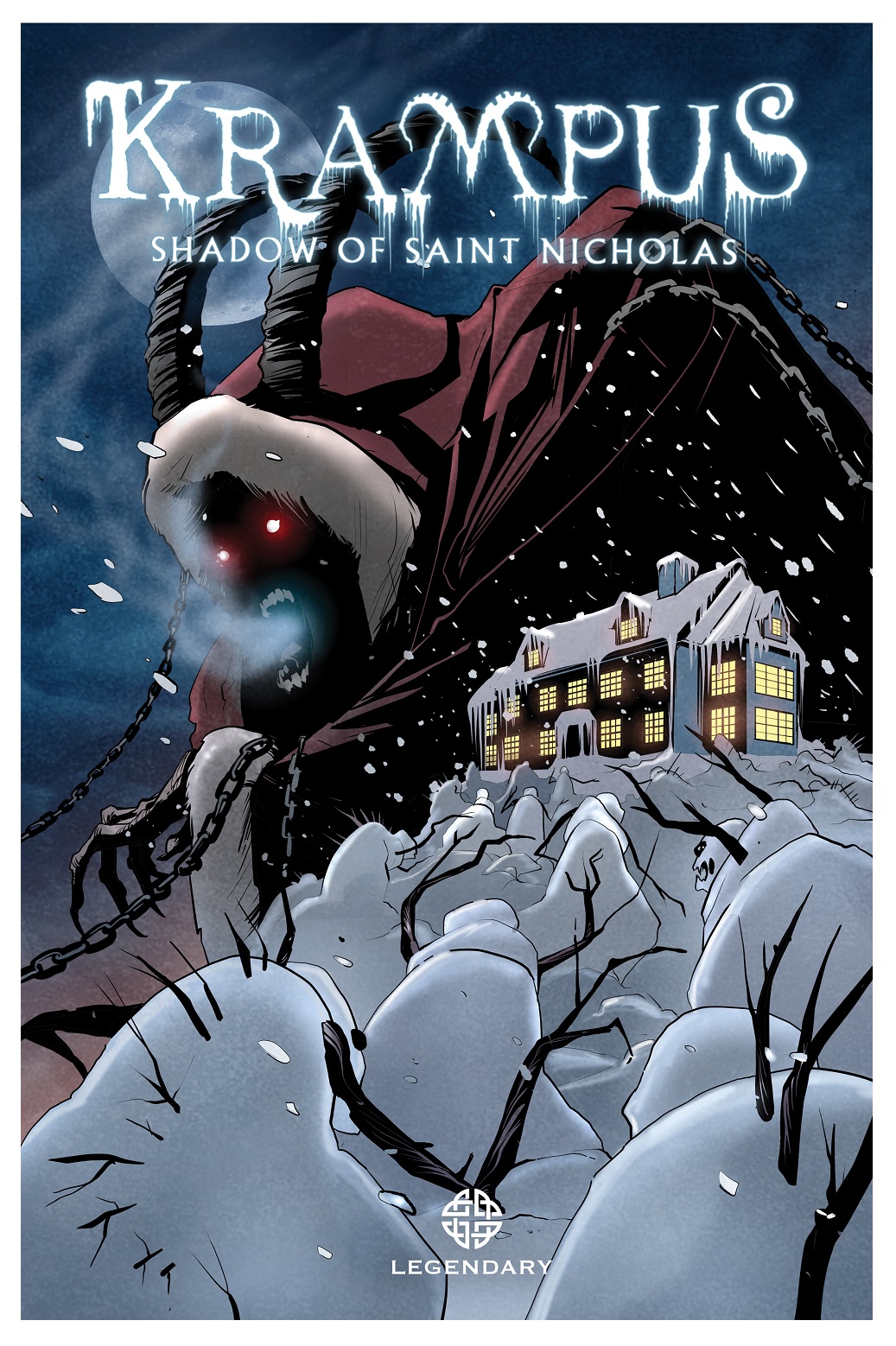
KRAMPUS: SHADOW OF ST. NICHOLAS OGN
Writers: Zach Shields and Todd CaseyCo-Writer: Laura Shields (Story II)
Stories: Todd Casey, Michael Dougherty, and Zach Shields
Art: Christian Dibari (Part 1), Maan House (Part 2), Stuart Sayger (Part 3), Michael Montenat (Part 4)
Publisher: Legendary Entertainment
Review: The Kid Marvel
KRAMPUS: SHADOW OF ST. NICHOLAS is a 129 page graphic novel prequel of the upcoming film KRAMPUS, directed by Michael Dougherty (TRICK ‘R TREAT). It features four sections, written by Zach Shields and Todd Casey, along with co-writer Laura Shields (Story II) and stories done by Todd Casey, Michael Dougherty, and Zach Shields. Each of the four parts features different artists and colorists, with Part I’s art done by Christian Dibari and colors by Mike Spencer. Part II’s art can be credited to Maan House and colors by Guy Major, Part III’s art is done by Stuart Sayger and colors by Guy Major, with Part IV featuring Michael Montenat on art and Mike Spencer on colors.
How much of KRAMPUS: SHADOW OF ST. NICHOLAS is related to or tied to the upcoming Krampus film, I’m not sure. However, Parts 1-3 are loosely connected through specific events of a broader story, all coming to a conclusion in Part 4, where all of the previous plots officially tie together in a pretty Christmas-themed ending.
It would be tough to go over each story as a whole or even a summary, simply because 129 pages over four different stories is a lot to cover, so I will try and keep it as simple as I possibly can. Part one features a grizzled alcoholic who is playing Santa Claus at what I believe is mall or some type of superstore. He, along with several others, become trapped in the mall due to an extreme change in weather cause by a massive snow storm, where they discover there is something darker going on behind the scenes. Part two follows a female officer who has arrested a local burglar who is directly connected to a horrific event of her past, and is trapped with him within this snowstorm of mythical proportions. Part three follows an evicted family who has decided to break into the home of the man who has put them out of the street believing he is out of the country; however, he returns sooner than expected, but this is the least of their troubles as he is attacked by a variety of possessed objects. Part four connects and concludes all of the previous stories of what has transpired over the course of the night.
Overall, KRAMPUS: SHADOW OF ST. NICHOLAS was a pretty solid read and I enjoyed it moreso than I originally thought I would. Each section of the book comes to a head nicely in Part four, bringing everything together and in a very Christmas-troped ending, which was surprising considering how dark the rest of the book was. This is definitely a horror-themed comic up until Part four. The best way I can explain this book is, think every Christmas-related story. Some character needs some Christmas cheer or isn’t exuding the Christmas spirit, so the story in some way finds them discovering forgiveness, new hope, whatever it is. KRAMPUS: SHADOW OF ST. NICHOLAS follows this same sort of theme, but in a much, much darker and more violent means of getting there.
The art is hit or miss for me, but nothing I’d deem as negative or awful. A lot of times it just wasn’t my cup of tea, but it didn’t take away from the script. In some ways the different artwork fit the plot of the various stories; I just didn’t like it in certain cases. The art had a raw, abstract feel to it, if I could give it some sort of description.
Anyone interested in the film or that enjoys horror comics, this is probably a graphic novel worth checking out. Everyone else, however, you may or may not enjoy it. This one really comes down to the individual who isn’t into horror books or wants some supplemental content before the film, on how much they would like or dislike the comic. I do think for most, KRAMPUS: SHADOW OF ST. NICHOLAS is worth checking out.
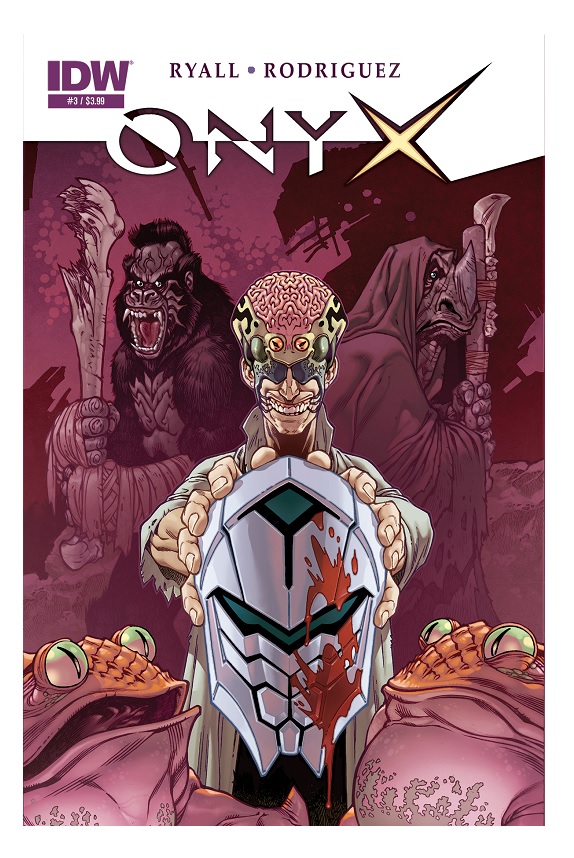
ONYX #3
Writer: Chris RyallArtist: Gabriel Rodriguez
Publisher: IDW Publishing
Reviewer: Masked Man
Chris Ryall’s (the man that gave us ZOMBIES VS ROBOTS) latest series ONYX continues to roll on, although there seems to be a mighty gap between issue #2 and #3.
Spoiler breakdown: The cosmic doom-spore that leaps from planet to planet, sucking the life out of each one with crazy mutations, has reached Earth. The good news is a warrior from one of the doomed planets, Onyx, has come with hopes of saving ours. But since humans aren't always good guys in sci fi stories (especially those working for the government), Onyx has her hands full when a secret government facility (think the ISLAND OF DR. MOREAU) has tech that blends with the spore, giving it a body and an army. Somewhat aided by the typical space marines, as half of them will drop Onyx at any moment to help protect the secret of the secret government facility, they try to figure out how to best blow up the spore.
For the most part, nothing stands out about this story aside from Rodriguez's artwork, which on the one hand is fairly standard comic book work, but on the other, you can tell he's really bringing his A game to these pages. The guy doesn't like to cut corners, and draws everything well. He's just missing that stylistic spark that guys like Art Adams, Ivan Reis, and George Perez have, which leaves him with peers like Bagley and the Kuberts. But with an Eisner Award for his LOCKE & KEY work, what the hell do I know?
As I mentioned, this is all rather straightforward sci fi, which can be very refreshing, as Ryall doesn't try to do anything more than tell a good story. And for the most part he was, until something odd happened between the last two issues. Here come some spoilers to spell it out. So as issue #2 comes to a close, Onyx and company are getting ready to enter the Bio-Eugenesis Foundry to chase after the mutant villains. Issue #3 starts with Onyx captured and her Guyver-like helmet removed. The soldiers at her side are all captured as well, with one decapitated and one missing her legs. And no flash back or anything, to explain what the hell happened. Yeah, that's not right.
So I wanted to give this issue a positive review, but seriously, what the hell? Did they think the fight scene wasn't necessary? Are they going to show it in a future issue? Was there a printer screw-up? All very odd, and it all robs the story of a natural flow. So this is a decent book, just, you know, look out.
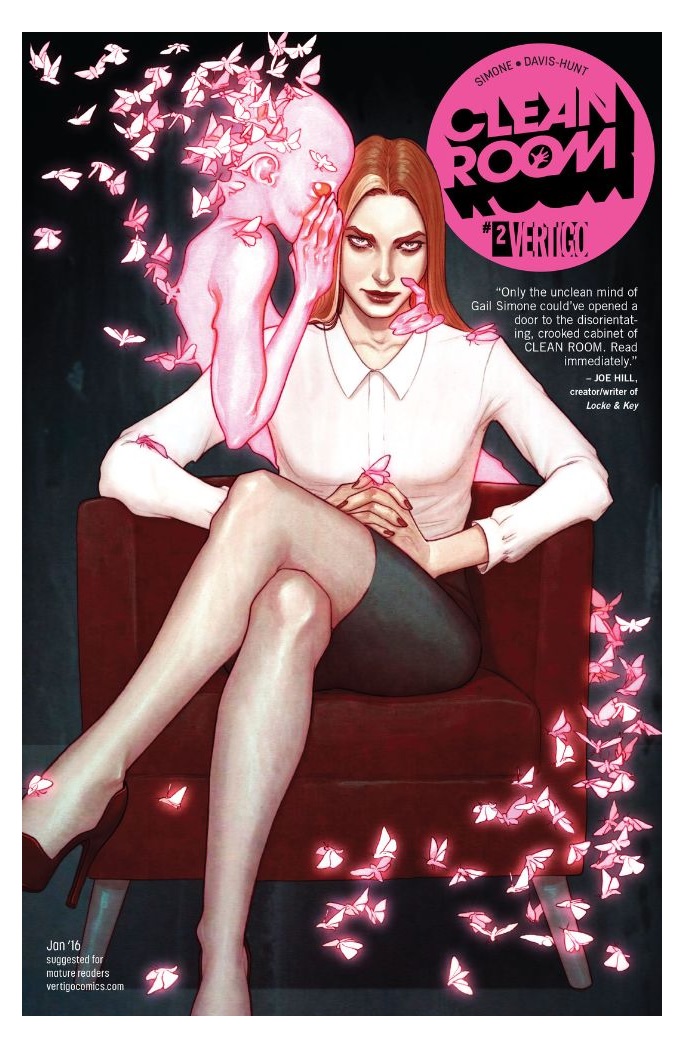
CLEAN ROOM #2
Writer: Gail SimoneArtist: Jon Davis-Hunt
Publisher: DC Comics/Vertigo
Reviewer: Humphrey Lee
I don’t really do horror as a blanket genre. I’m not big on gore for gore’s sake or sitting through jump scare after jump scare as the work tries to get the heart rate going by catching me off guard or just making me feel uncomfortable in the meaty bits of my body. Not to say I don’t enjoy stories that put me out of sorts, but I much prefer something that permeates the meat hunk in my skull by teasing and somewhat torturing and stimulating it from various angles rather than just making me feel off guard by trying to put me in fear of my mortality by watching a bunch of people lose theirs, often brutally. Basically, I like things more psychological, putting me in the “I like thrillers more than I do horror” category, to put a classification on it. But my roundabout point is that horror is nebulous as a category, and enjoyment of it is very specific to the interests of how it bends the brain waves of the person viewing the piece in front of them. I’m not quite sure if I would call CLEAN ROOM from a reinvigorated Vertigo line either a thriller or a piece of horror, but it kind of makes me feel dirty in a good way, so regardless I think it is off to a good start, whatever camp it falls into.
What CLEAN ROOM is when it comes to horror is, well, it’s kind of a bit of both the mindfuck and the squeamish fuck from what I’ve experienced with two issues out so far. It has bluntness about it that makes you feel uncomfortable because it is peeling back layers of its characters that you identify with: feelings of loss and a lack of hope, the darkness that creeps around the edges of our every day lives and emotions. It’s about trauma and how that opens up our perception on the fringes and lets the bad things into our world. At least I think that’s what this book is about; it’s kind of dense and fucked up so far.
The long and the short of the plot is that it IS a book about loss, mainly belonging to Chloe Pierce, journalist and survivor to her fiancée, who took his own life brutally and unexpectedly. Or was it? That’s the mystery at play here that Chloe has set her sights on, though she had to go to some dark places first, and that darkness seems to literally be haunting her now in the form of visions of terrible demonic beasts and the half-headed form of her deceased Philip. What the visions mean or how far the machinations behind his death at his own hands go it’s too early to tell, but what we do know is they involve a self-help book megastar named Astrid Mueller, and she indeed is packing her own titular “Clean Room.”
Here’s what I enjoy about this book so far: its nonchalantness at some pretty messed up life incidents and how they shape the people who lived (and didn’t) through them and that there is genuine mystery as to what exactly is going on here. Chloe’s finance gets really into Astrid’s books and eventually eats a gun. Chloe herself tries a suicide and comes back seeing weird demonic things that say perverted shit even sad sacks who pay five bucks a minute to hear such things would blush at. Astrid Mueller has herself some wicked technology that brings forth the dark secrets and places of the human mind to the point of their actually manifesting (or at least that’s what one would assume), as we see in this issue once Chloe confronts her personally. What exactly the source of these visions are, how real they are, how does Astrid have a room that can drive people to be confronted by their own dark visions and so on, are all pretty interesting concepts to work with so far, and it feels like it can go even deeper. And it’s all pretty visceral, the visions that haunt Chloe and others exposed to Astrid’s devices and words, the emotional pit Chloe has fallen into and how it threatens to swallow her whole, plus some other plot beats that go on in the two issues of CLEAN ROOM we’ve had thus far.
CLEAN ROOM is a success so far in that it absolutely gets under your skin, but not because it just bombards you with disturbing image after disturbing image. It crawls under your epidermis mainly because it makes itself home there within your thoughts and emotions and the blood fueling the system. You feel the loss that Chloe feels just like Davis-Hunt’s art drives home the actual terror on some of the psyches whatever is going on with Astrid’s “self-help” material and her spotless room. There’s mystery afoot and there is true goddamn emotion pouring out through the fantastic and sometimes terrifying-looking pages and it is all pretty engrossing. The main downside to it all is that it is also pretty dense and the glut of plot trying to be play itself out to get to, well, wherever it is that Miss Gail seems excited to take us does really feel crammed.
CLEAN ROOM, at its heart, is about personal tragedy, so there are a lot of events to cover and players within them to introduce and they are definitely done en masse, to the point where I had to reread the first two issues a couple of times to feel I was in a good place to discuss them here. And I still, overall, feel like I’m not sure what the hell is going on, but that is in the good way. The book is maybe a little frantically paced to get so much in, but it is understandable why given the kind of groundwork that it has set so far it feels like that solid base is imperative to understanding why exactly what is happening to who. So far CLEAN ROOM is a book about a woman who lost everything, including possibly her sanity, but is still on a determined road to find out why it happened, and she may have to explain the unexplainable to achieve her goal. Regardless of story genre, all of those traits – life, death, love, loss, and genuine mystery – are the best foundations to build your tale on, and so far CLEAN ROOM has succeeded at that very admirably.
Proofs, co-edits & common sense provided by Sleazy G
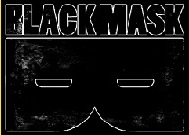 The next level of comic book excellence is a click away at BLACK MASK STUDIOS!
The next level of comic book excellence is a click away at BLACK MASK STUDIOS! Want more in all things Geek?
Want more in all things Geek?Check out our friends at PoptardsGo for podcasts, reviews, and more!
 And if you still need more geek in your life, check out Part-Time Fanboy for more geeky goodness on comics, movies, and more!
And if you still need more geek in your life, check out Part-Time Fanboy for more geeky goodness on comics, movies, and more!Finally, check out AICN COMICS on Facebook and Comixpedia!
